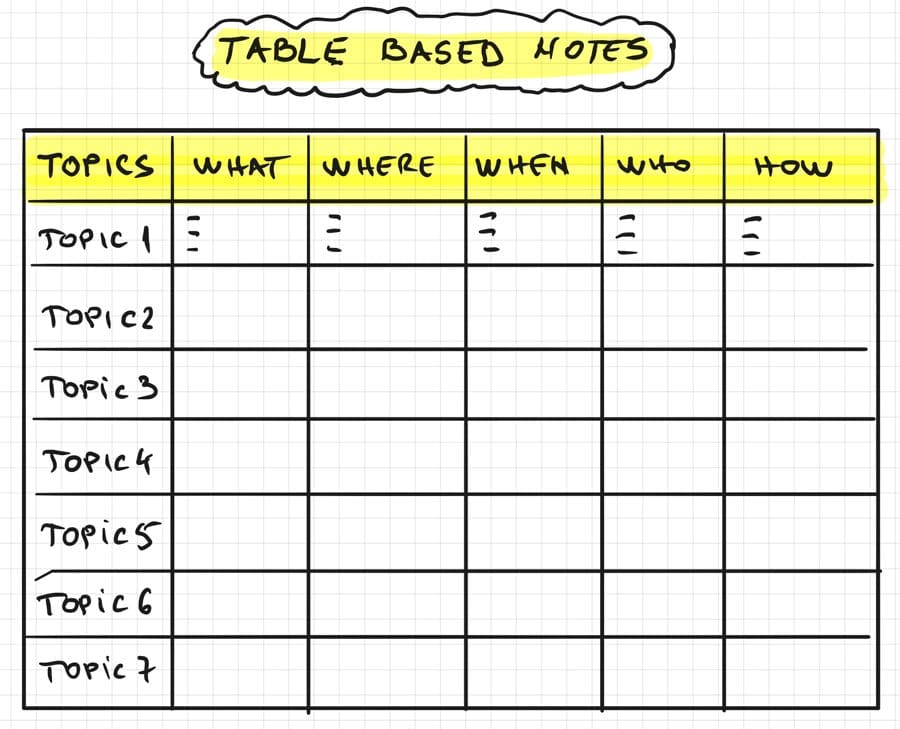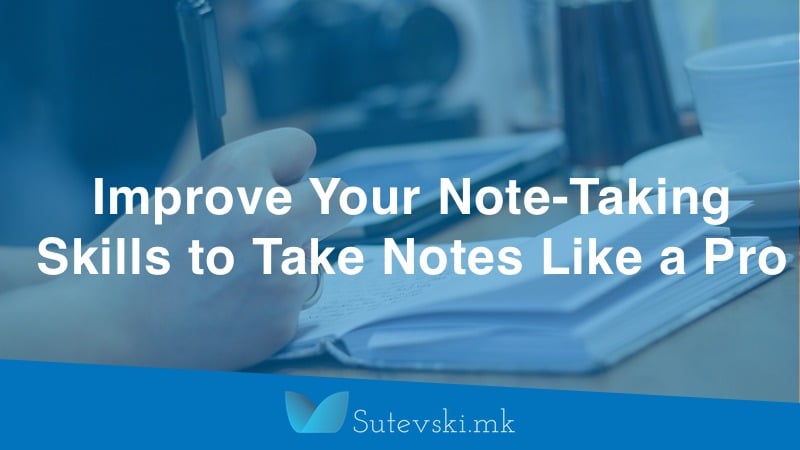Note-taking is an important part of our everyday life. We take notes to remember something, or when we learn something new or read a book. We take notes at meetings we have, or to put ideas to take some future action steps.
The process includes specific cognitive behavior. When we write notes, we simply engage our brain in a particular way to better understand and remember the information we get. This process helps you to process knowledge and create relationships between different ideas. In such a way, we can apply new knowledge.
Note-taking is not only for students. It can be used in your professional life, helping you to make better decisions and solve different problems.
Here I would like to explain the whole process and to share some useful tools and note-taking methods that will help you to take notes like a pro.
Why note-taking is important?
As I already mentioned at the beginning, taking notes to help you to identify what’s important for you and to organize that information into an understandable format to read later.
So, why note-taking is important for you?
- First, the note-taking will help you to keep your focus on the subject. Yes, note-taking will help you to focus on the for which you collect notes so that you can quickly put it inside your working memory.
- It is important because you will organize your ideas and thoughts in some more accepted format for your brain. Through note-taking, you will store the information in a specific form that you can review later and re-interpret your own notes.
- Note-taking will help you to remember what you have heard or what you are reading. How many times you have been at the conference or seminar and in the end you were so much excited because you have heard many interesting things. But, after several days, you realize that you have remembered only 10-20% of the information you get there. If you have the notes, and you organize them and re-interpret them after several days, the information will become knowledge, because you will learn how to use the information you get from such events.
- Note-taking will further develop your own listening, reading and writing skills. Yes, you will listen, read the presentation and write notes at the same time. These are important skills for you.
How You Take Notes? The Process of Note-Taking?
You start note-taking when you have some ideas when you try to learn something new or study some complex subjects. Your thoughts are explanations about what you think and then you write to explain things in written words. When you draw this you will express what and how you see things related to your ideas and thoughts. This is the most important result for your note-taking process because when you relate all three things you will get your “big idea” in a really more valuable format.
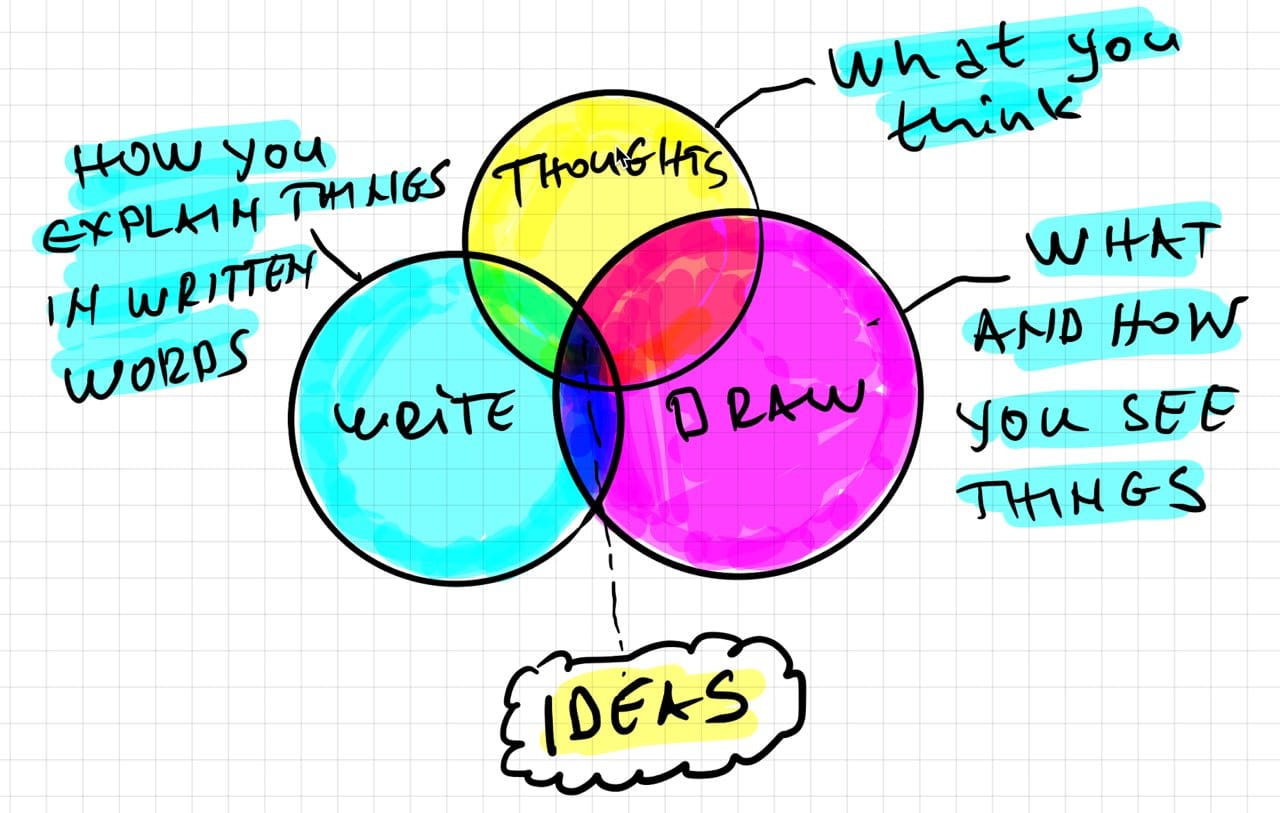
When it comes to your note-taking process, you can use whatever you think that best suits your own needs. There is not some specific design of how to take notes, because everyone is different and everyone takes and uses notes in different ways.
What is important is that you will need to take several things into consideration:
- What do you need to note inside your notebook when you take notes?
- Don’t write everything you read or hear.
- Make a pause, stop for some period of time.
- Review your notes.
I will briefly explain each of these important elements that you will need to take into consideration.
1. What to put as a note into your notebook?
This is one of the most important things when it comes to your note-taking system. When you write your notes you need to ask and answer these questions:
- Is the idea or thought important to become part of your notebook?
- What about relevancy? Is this something relevant to me?
- Is what you write in your notebook credible? Or, is this fact, opinion or example for something.
When you train your brain to answer these questions, you will be able to write down only the things that matter the most for you.
2. Don’t write everything you read or hear.
When you take notes, you will need to focus on the summary of the mine idea and keep your notes as simple as possible.
Also, you can use shortcuts, abbreviations, symbols, and drawings understandable for you in your own words. Remember that your notes don’t need to be the same page as the page you read in the book or the same as the presentation that you look at seminars.
Additionally, you can differentiate the importance or meaning of some notes using different colors and text sizes. You will need to create your own system of symbols and use the indexing system in order to find the information from the notes at the moment when you need it.
While you are taking notes, ensure that you leave enough white space. This is important for the sate when you will start reviewing your notes because you will get additional ideas, you will find additional connections and you would like to put them into your notebook.
3. Pause and stop for some period of time.
When you finish writing notes, you need to stop for some period of time and leave them as they are initially written. Most times you can not see the right connections between the dots inside your notes if you are tired or you work too much time on the same subject.
The brain will need to rest and process the information you have noted. Simply do something else, something that is not related to the main subject of your notes. You want to go outside the zone of note-taking and you don’t want to think about them.
4. Review your notes.
This stage of the note-taking process is important because now you can expand your initial thinking about the subject. Simply, when you review your notes, add comments, thoughts, and questions and answers.
At this stage you can rearrange and group your notes so they can become part of the specific sub-subjects. In such a way you can more easily find the relationship between different parts of your notes.
When you finish reviewing, you can add several sentences as a summary, or a better way is to make a drawing that will represent everything you have noted and reviewed. In such a way, you will train your brain to think about visualization of the written words.
Now that you’ve got your notes and class is over, how do you get the most out of them? There are three great ways to maximize your notes:
Note-taking Methods You Can Use
There are many different note-taking methods you can use. Generally, the methods can be classified into three groups: linear, non-linear and mixed styles of note-taking. The first style uses the format very similar to traditional written text (like outlining method), while non-linear style uses graphical presentation like mind-mapping method. Non-linear styles will help you to organize your notes in an unconventional and more systematic way.
Also, there is a mixed style when you can use both, linear and non-linear notes.
In many cases, when I read or listen to something, or simply come to an idea, I start my notes with linear style – outlining method. Then when I start reviewing the notes, I try to present them visually and in most cases, I use something like process maps, or mind mapping in order to group them and try to find the relationship between them. And at the end, when I write the summary of my notes, again I will try to make broader visualization related to everything important inside my notes.
Here I would like to cover several methods that can be most useful for you if you want to become pro-note-taker.
Outlining note-taking method.
The outlining method is one of the most used methods and the easiest way to take notes. When you use this method you will have several main or key points. Each of the main points will have one or several sub-points. You can go in-depth of the sub-points as much as you want, but I will not recommend using more than 3 levels in depth.

When you use this method, be sure to leave as much as possible white space, because when you review your notes in many cases you will need to add additional sub-points, or explanations, comments, and questions.
Drawing note-taking method.
Drawing method is more complex method than outlining method because you represent your notes visually. Simply, while using this method you try to use your brain to think using images and words combined.
You don’t need to be artist to have drawing notes in your notebook. You can start with the simplest form of drawings using circles, squares, triangles, lines and dots.

You can start with your idea and then add different meanings and thoughts. At the end your idea will become totally different than initial one.
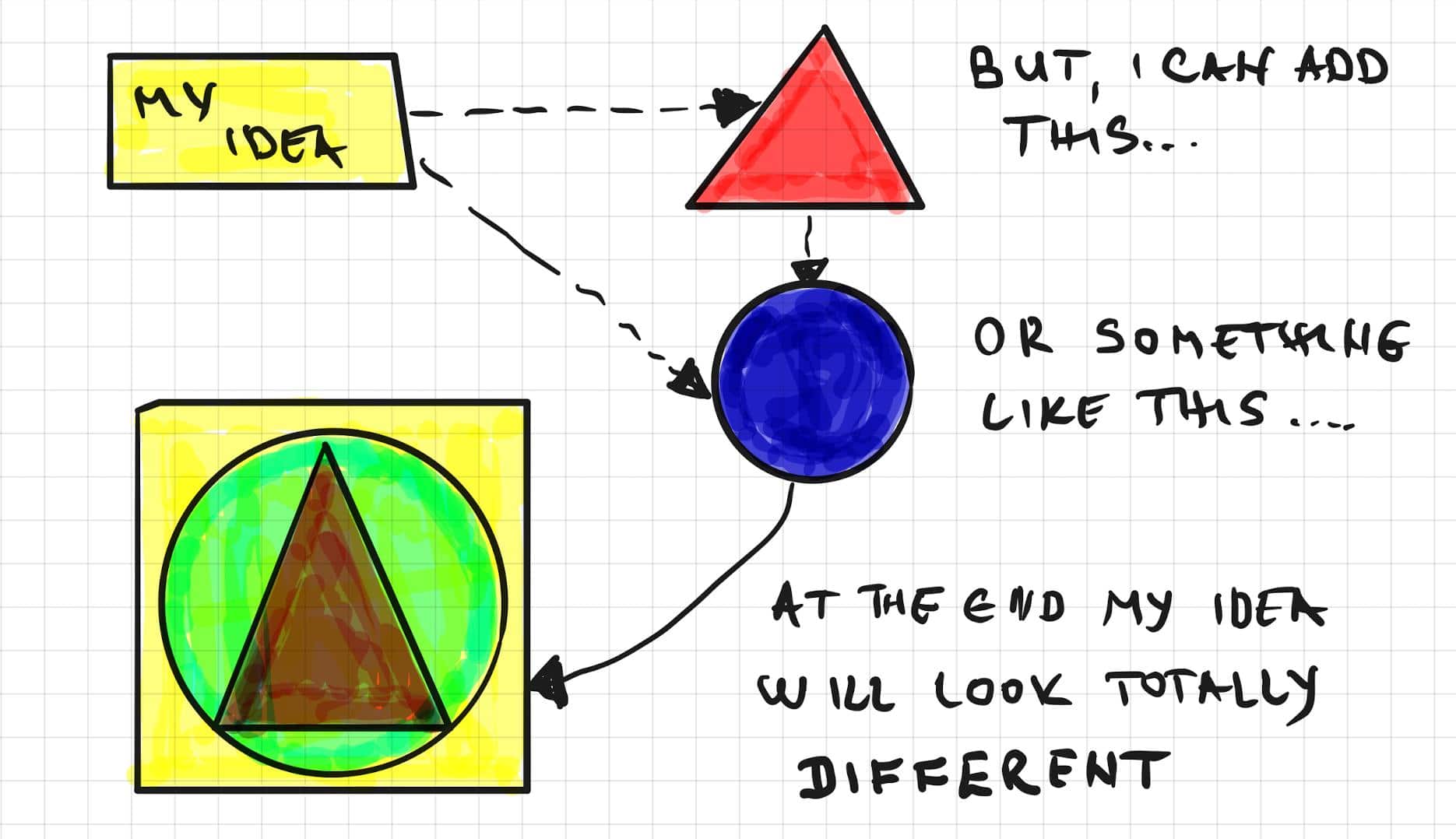
Mind mapping note-taking method.
The mind mapping method for note-taking is a great way of taking notes for specific types of subjects. You start with the main concept in the center and then continue to draw different branches, or nodes as sub-branches.
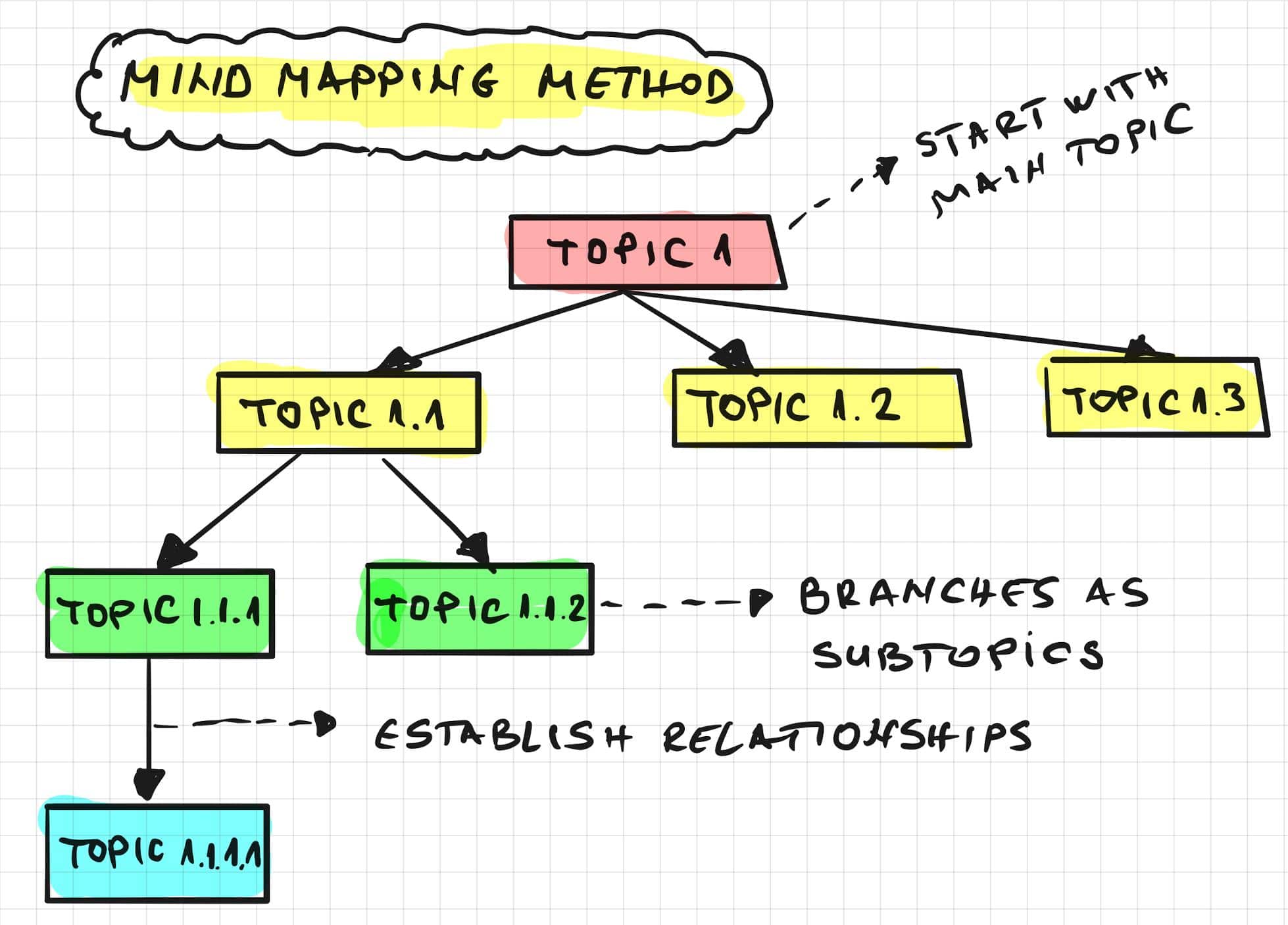
As you can see, this method is similar to the outlining method where you have the main topic and sub-topics, but here they are presented graphically as a mind map.
Boxing note-taking method.
Boxing note-taking method is another useful method that can help you to find some still unseen relationship between different notes. I have started using this method when I use Scapple to collect information. As a first I only write different notes, and then when I finish with adding, I reorganize them in boxes. In each box there are related notes. The name of the box will be the main subject of the related notes.
After reorganization of notes inside boxes, I can add explanations, some definitions, relations, different meaning and different thoughts related to the specific notes inside each box. Also, it is important to add arrows between boxes or individual notes that will present direct or indirect relationships between them.
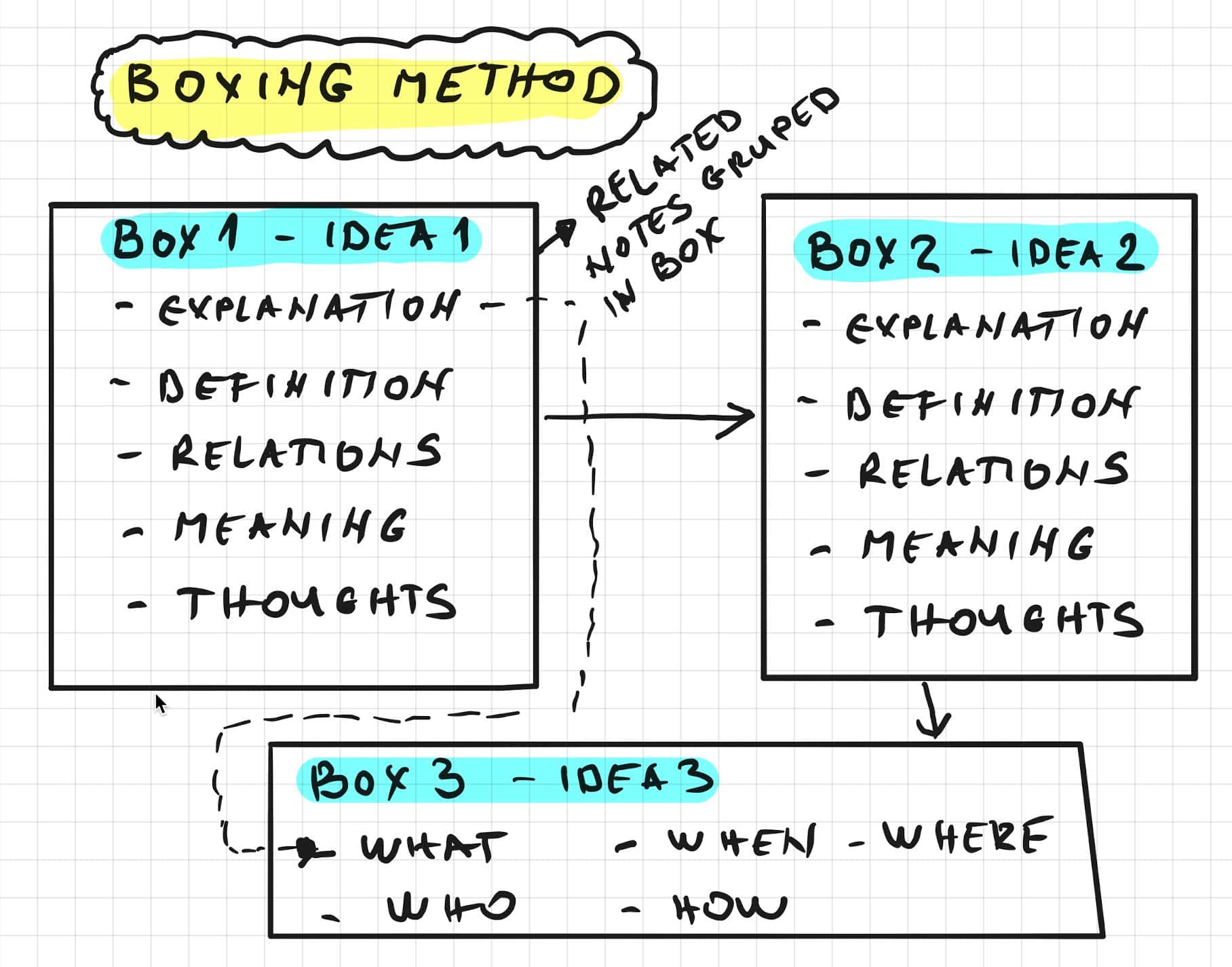
Cornell note-taking method
The Cornell note-taking method is one of the most popular note-taking methods used today for learning purposes. If you want to use this method you need to divide your page for notes into 3 sections:
- the right column is the area where you take notes using the outlining method or other writing methods. This is the place where you keep your most important notes in the form of ideas or thoughts you have discovered through reading or listening in class.
- the left column is a column for keywords, questions, and comments and serves to add things related to the note-taking area. So, you can easily understand and connect each piece of your notes. Usually, the best way is to write this section after you finish taking notes.
- The last section is the section named “summary” that you will use for reviewing purposes after you finish with note taking and additions to your notes. Your summary will need to be short 5-10 lines of text.
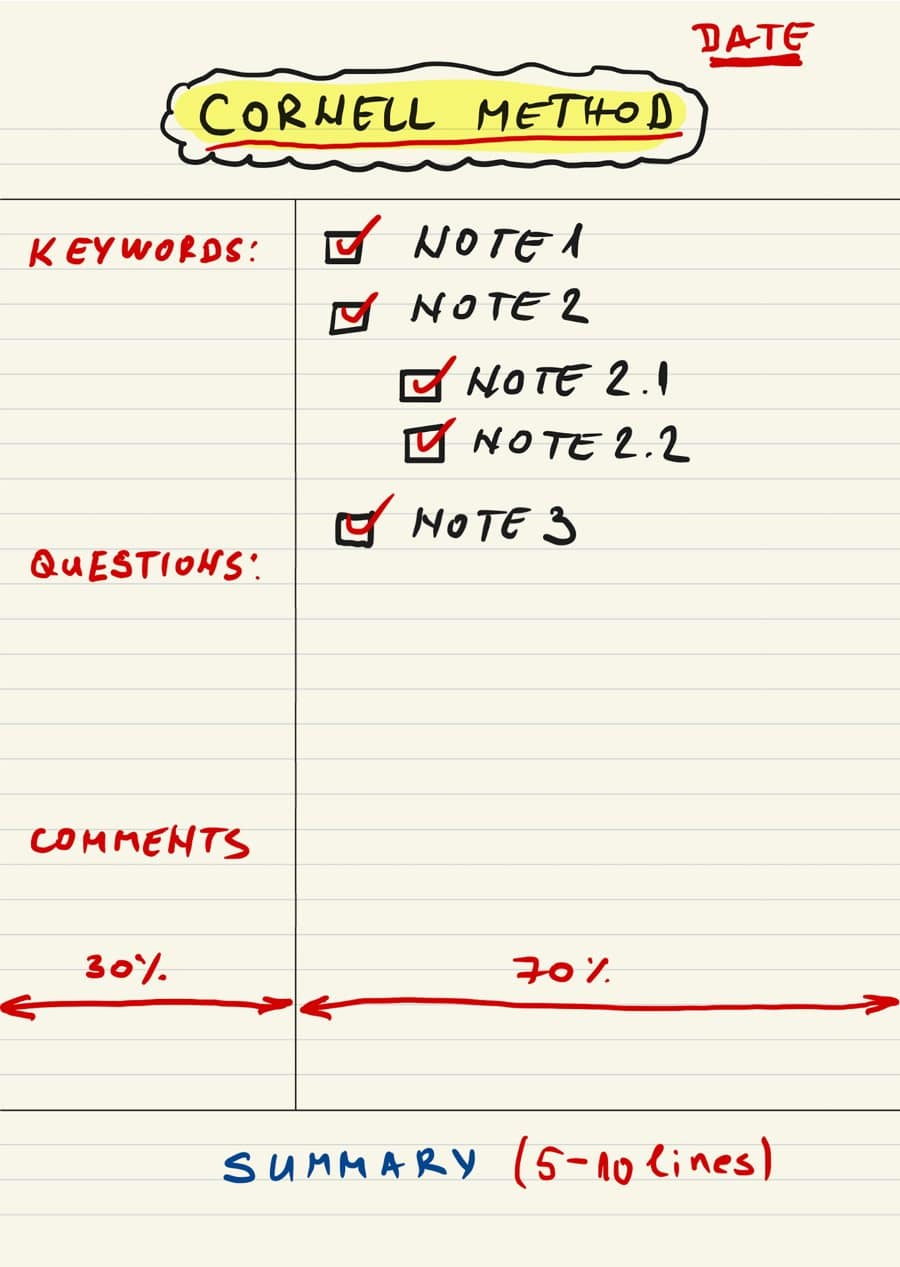
Table-based note-taking method.
The last method I will cover here is the table-based note-taking method. As the name tell us, this method use table in order to group notes while you taking them.
I want to use 4W1H style of this method. You can build your table based on 4W1H with first column related to topics. In this column you will put the main topic of the note and the next columns will be used to describe additionally the meaning of the note. The next thing is to add 5 more columns each for WHAT, WHERE, WHEN, WHO and HOW (4W1H).
